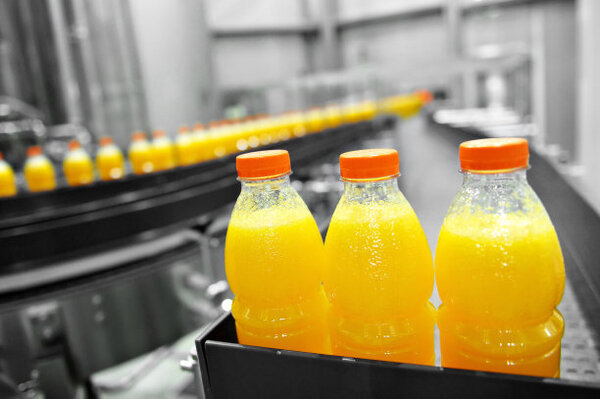From Juice to Schnapps: Sokos Expands Product Line and Market Reach
Table of Contents
- Introduction: A Bold Flavor Expansion
- The Starting Point: A Robust Juice Production Line
- The Key Technology: Versatile Beverage Filling Machines
- Not Just Bottles: The Role of a Beverage Can Filling Machine
- The Strategic Move: Adapting the Juice Filling Line
- Conclusion: Key Takeaways for Manufacturers
- Your Questions Answered (Q&A)

Introduction: A Bold Flavor Expansion
Wow, talk about a deliciously smart business move! Sokos, a name folks trusted for their fantastic juices, recently made headlines. They brilliantly expanded into the adult beverage market with a line of premium Schnapps. But here’s the real question: how did they manage such a smooth transition without building a whole new factory from scratch? The secret sauce, my friends, wasn’t just a recipe—it was their incredibly flexible juice production lines and their savvy use of filling technology.
The Starting Point: A Robust Juice Production Line
It all started with their core strength: juice. Sokos had already invested in a high-quality, hygienic juice production lines.
This wasn’t some basic off-the-shelf setup—oh no. From day one, Sokos built their operation with two non-negotiables: spotless cleanliness and serious versatility. We’re talking about a system that masterfully handled the entire process: raw juice pasteurization, precise blending, and of course, filling.
What seemed at the time like a straightforward investment in a reliable juice filling line secretly laid the entire groundwork for their explosive growth into spirits. And that’s the real lesson here, isn’t it? A properly engineered juice production lines is never just a one-trick pony.
The Key Technology: Versatile Beverage Filling Machines
Now, this is where the magic really happens. The heart of their expansion lay in their beverage filling machine. Originally used for juices, this machine was a real workhorse. Modern beverage filling machine units are often designed to handle a range of viscosities and carbonation levels—from still apple juice to slightly syrupy cocktails and beyond. For Sokos, transitioning from juice to Schnapps meant primarily adjusting the filling parameters, not buying entirely new equipment. This flexibility saved them a fortune in capital expenditure and significantly reduced their time to market.
| Product Type | Machine Type Used | Key Consideration |
|---|---|---|
| Pure Fruit Juices (Still) | Standard Gravity Filler | Hygiene, Gentle Handling |
| Carbonated Juices & Mixers | Pressure Fillers | Precision CO₂ Control |
| Spirits (Schnapps, etc.) | Versatile Piston Filler | Alcohol-resistant seals, No dripping |
Not Just Bottles: The Role of a Beverage Can Filling Machine
But wait, there’s more! Sokos didn’t just stop at putting Schnapps in glass bottles. Recognizing the booming trend in ready-to-drink (RTD) cocktails, they also launched canned options. This is where adding a beverage can filling machine to their arsenal came into play. Integrating a canning line alongside their existing juice filling line allowed them to tap into a completely different distribution channel—think convenience stores, bars, and festivals—without disrupting their core bottling operations.
The Strategic Move: Adapting the Juice Filling Line
So, what was the actual strategy? It wasn’t about replacement; it was about adaptation. Sokos’s team worked closely with their equipment provider to assess what their current juice filling line could handle. So, what were their actual moves? Honestly, it was a series of brilliantly practical and cost-conscious upgrades—nothing crazy. They started by switching out standard seals for ones specifically designed to withstand alcohol. Then came the fine-tuning: meticulously calibrating their equipment to handle new bottle sizes and different fill volumes for their spirits. And let’s not forget the labeling—they gave the system a boost to accommodate sleek new designs that screamed “premium Schnapps,” not just everyday juice. This approach of modifying and upgrading their existing juice production line meant they could produce both their classic juices and new Schnapps products on the same line with minimal changeover time. Absolutely brilliant!
Conclusion: Key Takeaways for Manufacturers
Whether it’s a robust beverage filling machine or a modular juice production line, thinking about future flexibility lets you pivot quickly and capitalize on new market trends. So, if you’re currently running a line, take a good look at it—what’s its potential? The next big opportunity might be closer than you think.
Your Questions Answered (Q&A)
Can a juice filling line really handle alcoholic spirits without contamination?Absolutely, yes! The key is compatibility. As long as the contact parts (like seals and tubing) are made from materials resistant to alcohol (like certain silicones or EPDM), and a thorough CIP (Clean-in-Place) process is run between batches, cross-contamination is a non-issue. Many modern beverage filling machine models are built with this versatility in mind.
What’s the biggest advantage of adding a beverage can filling machine?It’s all about market reach! Cans are hugely popular for on-the-go consumption, are often preferred for RTD cocktails, and can be more economical to ship. Adding a beverage can filling machine lets you tap into the vibrant craft canning market without abandoning your bottling customers.
Is it difficult to switch production from juice to spirits on one line?It requires planning, but it’s not inherently difficult. A well-designed juice filling line with a versatile beverage filling machine can make this changeover surprisingly swift.

